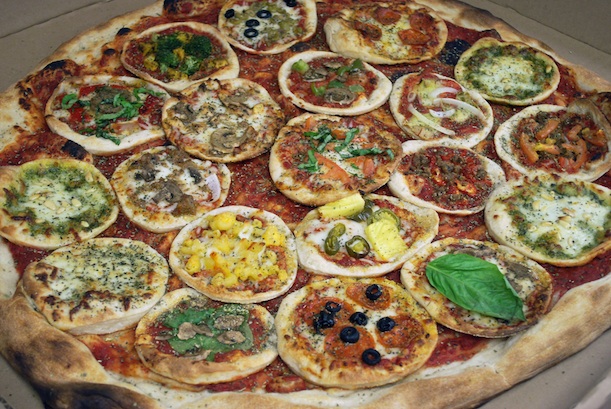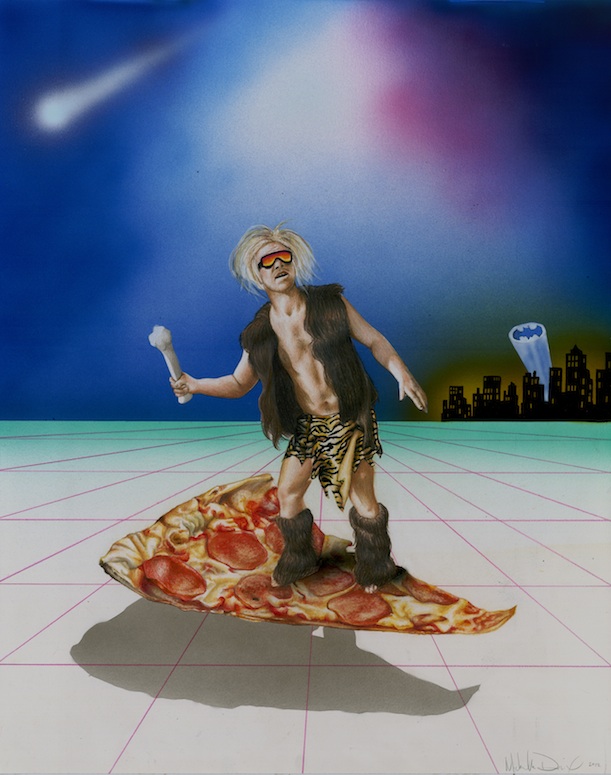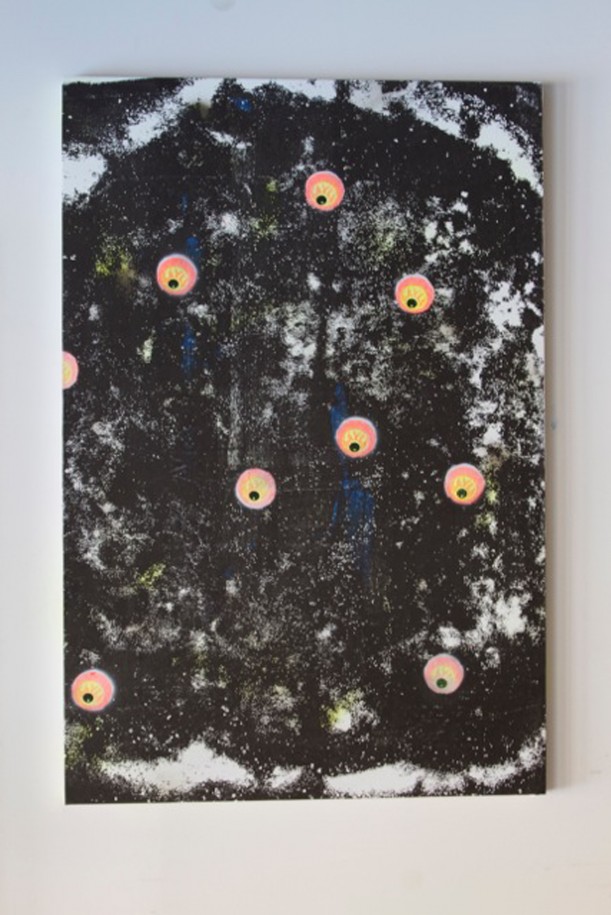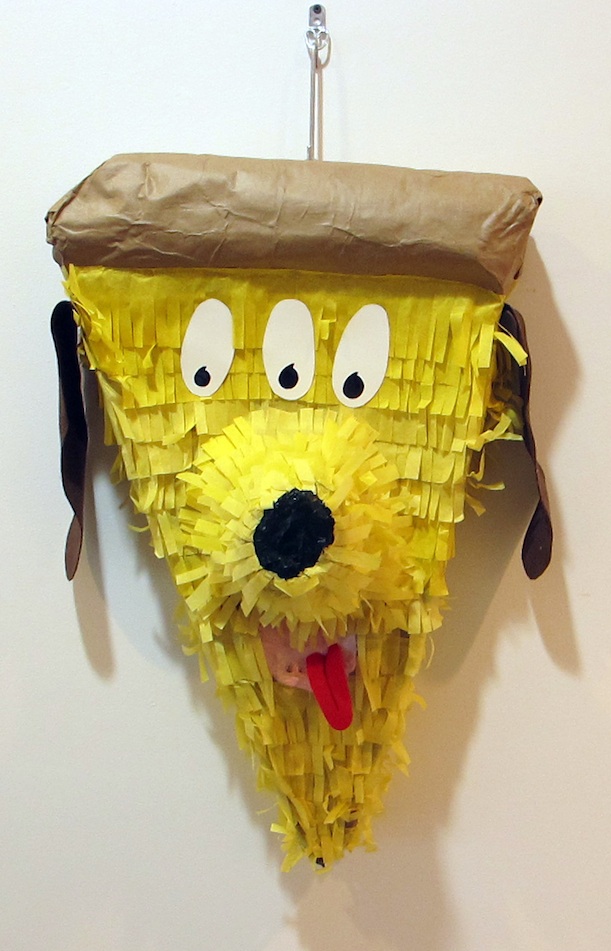Snack on This: One Curator Has Devoted a Whole Show to Pizza Art
What is it about that slice of cheesy goodness that makes it such an appealing subject for these artists?
/https://tf-cmsv2-smithsonianmag-media.s3.amazonaws.com/filer/f0/62/f0625d36-383a-4cff-b381-56b231160c79/0pizza-still-life-611.jpg)
Pizza has come a long way since the 18th century. This winning combination of bread, tomato and cheese, which food writer Alan Richman dubbed the “perfect food,” is said to have originated in Naples, but today it claims admirers the world over, inspiring endless variations, effusive odes and even, in Philadelphia, a pizza museum. It was only a matter of time before the humble pizza pie got the fine art treatment.
“PIZZA TIME!,” the inaugural show of Manhattan’s Marlborough Broome Street Gallery, features more than 25 works of pizza-inspired art. It’s a playful take on pizza as food, as consumer brand, as cultural icon and, perhaps most importantly, as common denominator. Curator Vera Neykov calls pizza a “metaphor for community,” something that is “not too fussy” and brings people together.

John Riepenhoff, “Physical Pizza Networking Theory,” 2013, pizza on pizza in artist-made pizza box. Image courtesy of Marlborough Broome Street
That sense of community animates John Riepenhoff‘s conceptual piece, “Physical Pizza Networking Theory,” which debuted on opening night as a 38-inch pizza topped with miniature pizzas. Riepenhoff hired a local pizzeria to cook up the largest pie its oven could hold and then custom-built the box in which the pizza was delivered. On opening night, visitors were invited to dig into this edible artwork, leaving an empty pizza box in the gallery. Riepenhoff describes the work as a recursive “collage” that “address the ontology of the social as material in art,” and Neykov was struck by its temporality, as visitors came, saw and ate the artwork—“there it was and now it’s gone.”

Michelle Devereux, “Caveman on Pizza,” 2012, colored pencil and airbrush on paper. Image courtesy of Marlborough Broome Street
Michelle Devereux’s “Caveman on Pizza” and “Dude on Pizza #6” couple pizza with other pop culture icons. The irreverent colored-pencil drawings imagine a Tron-like grid world and hovering pizza crafts topped with a surfing Neanderthal and a reclining “dude.” In “Dude,” pastel dinosaurs cavort before an airbrushed aurora borealis, while in “Caveman,” the Bat-signal looms over the cityscape in the background.
Other works are more evocative. Andrew Kuo’s “Slice 8/23/13” and “Piece/Peace” render the pizza’s familiar triangular form in geometric shards and colorful smears, respectively. Will Boone’s “Brothers Pizza” series shows the spooky outcome of photocopying a pizza; these images feature red pockmarks, presumably pepperoni, on black backgrounds.

Will Boone, “Brothers Pizza,” 2013, enamel, acrylic on canvas. Image courtesy of Marlborough Broome Street
Neykov, who started working on the show last fall, was surprised by how much pizza art is out there. “I feel like this show can be done three more times with completely different artwork,” she says. The variety makes sense to her because pizza is itself a “canvas”: “There are so many different levels, from super cheap sliced pizza to fancy restaurant pizza to frozen pizza to make-it-yourself pizza. You can dress it up or you can dress it down.”
Some of Neykov’s favorites are Oto Gillen’s photographic still life, “untitled, (Vanitas),” and Willem de Kooning’s pencil drawing, “Untitled Circle.” Although it’s unclear whether de Kooning had pizza in mind, Neykov observes that shadowy circles on the work suggest toppings and thin lines seem to cut it into slices.
For Neykov, PIZZA TIME! is not so much a response to foodie culture as it is a reflection of globalized, digitized, mash-up culture generally. Pizza has “come into culture in a way that people no longer look at it and think it’s absurd,” she says; it’s a product of culture just as worthy of study and artistic exploration as any other. “It may be silly,” Neykov says of the show, “but it’s not dumb.”
